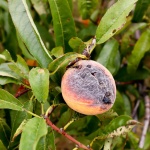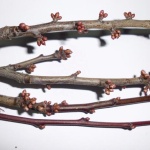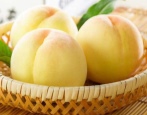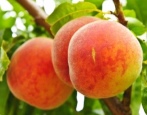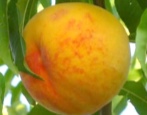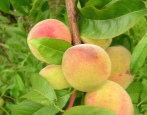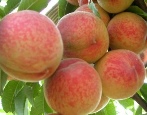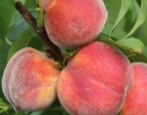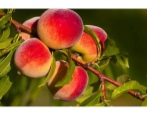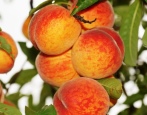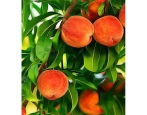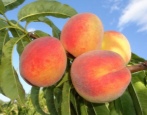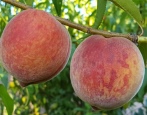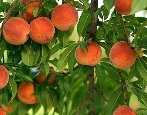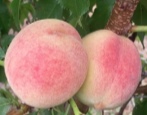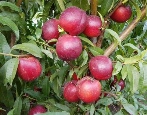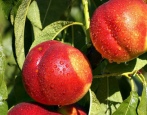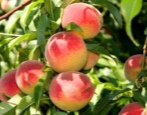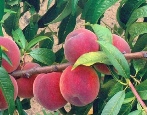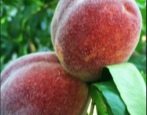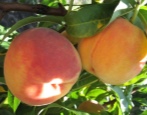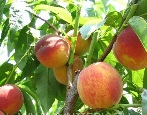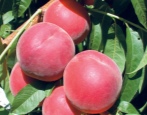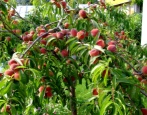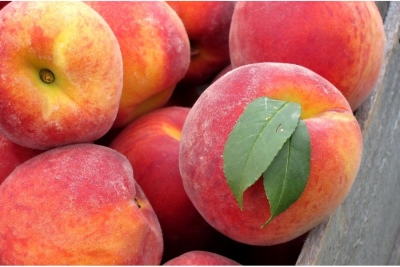
- Appeared when crossing: Rochester x Greensboro
- Growth type: vigorous
- Ripening period: early maturing
- Self-fertility: self-fertile
- Appointment: dining room
- Yield: high
- Early maturity: begins bearing fruit for 2-3 years from the moment of planting the seedling
- Bone size: large
- Separability of the bone from the pulp: not separable
- Winter hardiness: high
The Juicy variety will leave few people indifferent in terms of its wonderful taste and the degree of juiciness of peaches. Actually, for this reason, it is named so. Moreover, it has relatively high frost resistance, it can withstand dry days well. A culture for gourmets and for those who are not particularly used to hard work or do not have enough free time.
Breeding history
Culture appeared in 1932 thanks to the works of the scientist I. N. Ryabov, who worked on the territory of the State Nikitsky Botanical Garden. He was able to cross the high yielding and winter hardy Greensboro peach with the productive and hardy Rochester peach. The results of the work later (1947) were transferred for experimental variety trials. It was only in 1965 that Juicy was entered into the State Register for the North Caucasus region.
This peach culture for dining purposes has now become the most widespread on the territory of Crimea, entered into the State Register of Ukraine. It is intended for cultivation in the steppes and forest-steppes.
Description of the variety
The culture is vigorous (3.5–4 m), with a spreading and rounded crown prone to thickening. Leaves are large in size, with jagged edges. The flowers are pink.
The flowering period starts in the second decade of April and lasts 1.5–2 weeks. The process of development of fruit-forming buds begins on the overwhelming majority of shoots, for this reason the trees are often overloaded due to the abundance of fruits. Of the advantages of culture, it should be noted:
- early maturity;
- self-fertility - no pollinating plants are required;
- high productivity;
- regularity of fruiting;
- excellent taste;
- reliable winter hardiness;
- resistance of fruit-forming buds to temperature drops in spring;
- drought tolerance;
- reliable resistance to clasterosporium disease.
Minuses:
- low level of keeping quality and transportability;
- tendency to thicken the crown;
- congestion with the number of fruits;
- possible damage by powdery mildew.
Fruit characteristics
Peaches of medium size (100-150 g), spherical, slightly flattened on the sides, greenish-cream color with a slight burgundy blush. The stalks are short. The fruits are covered with a firm and thickened skin with intense pubescence. The abdominal suture is well defined.
The pulp with an abundance of juice is greenish-white, with noticeable red veins, of a creamy structure, in the area of the stone is pink, fibrous. The seeds are large, rounded, and do not separate from the pulp. By chemical composition, fruits include: sugars - 8.5-12.4%, acids - 0.5-0.6%, vitamins and minerals.
The culture is dining, the fruits are eaten fresh, and they are also suitable for making juices. Due to the juiciness of the flesh, the peaches are not shelf-stable and are poorly preserved during transportation. Removing the fruit is done carefully, and a neat single-layer stacking is required.
Taste qualities
The fruits have a rich sweet and sour taste and a pleasant aroma. The taste is perfectly balanced. Tasting score in points - 4.5.
Ripening and fruiting
The first fruiting occurs at 2–3 years of growth, and then it is regular. The culture blooms in the second half of April. Fruits ripen early.Depending on climatic conditions, they ripen in late July or early August.
Yield
High-yielding variety: up to 60–70 kg per tree.
Growing and care
In the Crimean region, it is more expedient to plant the culture in the fall, and in more northern latitudes - in the spring. The seeding scheme for seedlings is 2.5-3x4 m. The rest of the rules for planting trees, as well as the rules for caring for them, remain standard. If the young were planted in the fall, then it must be completely wrapped up with air-permeable covering materials (lutrasil, spunbond) or simple burlap. Sometimes the trees are covered with tall cardboard boxes filled with dry hay.
A special feature for the crop is the order of pruning, since it has the intensity of growth and the ability to thicken the crown. Special attention should be paid to the timely implementation of formative and regulating (thinning) pruning.
In the first 3-4 years after planting, it is necessary to correctly form the crowns of trees. Usually they are given a bowl configuration to provide the branches with ventilation and adequate lighting. In addition, in this way, conditions are created to reduce the likelihood of diseases of fungal origin, as well as for the full ripening of peaches. The use of sparse-tiered moldings is also allowed. However, regardless of this, the crowns in the future will need to be systematically pruned.
In the process of leaving, it is necessary to take into account the tendency of the culture to overload with fruits. To do this, trees are eliminated from unnecessary ovaries using the manual rationing option, which is carried out 21-28 days after the flowering period. Excess ovaries are eliminated, maintaining a distance between them of about 15–20 cm. Trees have rather fragile wood, therefore, with significant crop loads, branches can break, and reliable supports are installed to strengthen them.
Irrigation of Juicy is carried out similarly to irrigation of any other varieties of peaches. Juicy withstands dry periods well, but drying out of the soil is undesirable. Waterlogging of the soil is also not beneficial, which stimulates the process of infection with diseases of fungal origin.
In order to obtain a bountiful harvest, Juicy should be fed, alternating organic matter with mineral fertilizers, according to the scheme traditional for peach crops. Additional dressing will significantly increase both the volume and quality characteristics of the harvested fruits.
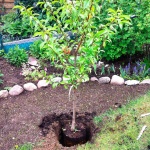
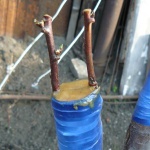
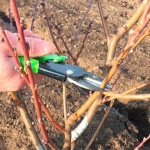
Frost resistance and the need for shelter
The culture is unpretentious, has good endurance parameters.
- High level of winter hardiness - trees can confidently withstand temperatures down to -25 ° C. There are verified reviews that trees survived even short-term (for 2-3 days) frosts at -30 ° C without damage. Flowers and ovaries can withstand temperatures as low as 0 ° C.
- The level of drought tolerance of the plant is within the average values.
By the end of November, despite the high degree of winter hardiness, it is worth considering taking measures to protect the culture from severe cold weather. We wrap the boles and skeletal branches 2 or 3 times with a "breathing" protective cloth or burlap.
Disease and pest resistance
Culture is not protected from all diseases. There is a good immune potential for clasterosporium disease, but powdery mildew disease is typical for it. Therefore, you should not avoid carrying out preventive procedures. In this sense, the systematic implementation of standard sanitary work is relevant, as well as the implementation of early spring and autumn protective spraying with fungicides. These procedures will also help to protect against possible harmful attacks if insecticides are also used during their application.
